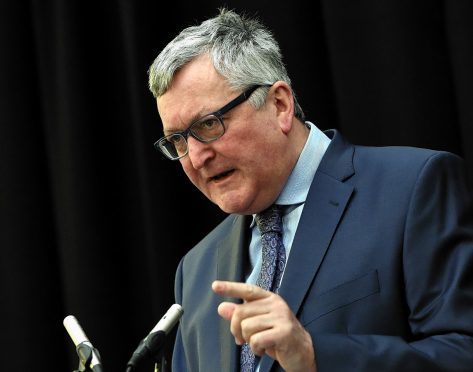Scotland will exceed its target of connecting 95% of homes to superfast broadband, according to connectivity secretary Fergus Ewing.
And the remaining 5% or so of the most difficult to connect homes will have a fibre connection by 2021.
Mr Ewing, in an article for the Press and Journal, said everything was on schedule with the roll-out of the superfast programme and procurement for the remaining 5% of homes unconnected by the end of this year will start in 2018.
Previously, UK digital minister Matt Hancock has pointed the finger at the Scottish Government, telling MPs Scotland was the slowest region of the UK to start the process during last month’s questions to the Department for Culture, Media and Sport.
Mr Hancock said funding was allocated in February 2014, and nearly every council in England, Wales and Northern Ireland had completed most or all of the procurement by June 2015 but, in contrast, Scotland had not yet started its procurement process for broadband upgrades in rural areas.
But Mr Ewing said it was Scotland’s high ambitions that were being put in jeopardy by Westminster’s failure to “grasp the nettle”,
“Its unwillingness to create a speed standard for all, in law, that is higher than 10mbps means that what we will be entitled to expect from providers is far too low to meet families and businesses’ needs,” he wrote. “If we have to wait years for better connections and better speeds in Scotland, we will be left behind in the digital revolution.”
FERGUS EWING, CONNECTIVITY SECRETARY
As technology rapidly advances, so too must Scotland’s economy. Our Programme for Government this year sets out a bold and forward looking economic vision which seeks to create a future of opportunity for all.
To achieve that vision, we need to drive technological and digital innovation and make Scotland the most attractive place in the UK to invest in telecoms.
The foundation is efficient and effective digital infrastructure so we will deliver free wifi in cities and major town centres across Scotland.
We are on track to fulfil our ambition to provide access to superfast broadband to 100% of homes and business premises by 2021.
There is huge potential to enable and support new business opportunities and the skilled jobs and careers they need if we enhance our international connectivity. This includes opening up existing or providing new transatlantic fibre crossings.
As more and more us shop, work, engage and do business online, we create more information that we want and expect to be stored securely out there “in the cloud”. Again, that creates economic opportunity.
Data centres are key and Scotland is ideally placed to offer the connections, skills, capacity and physical space that tech providers will need. Work is under way to ensure we are at the forefront of such developments.
The Scottish Government’s ambitions are high but sadly, not matched by those of the UK Government. Its failure to grasp the nettle puts at risk our digital aspirations.
Its unwillingness to create a speed standard for all, in law, that is higher than 10mbps means that what we will be entitled to expect from providers is far too low.
If we have to wait years for better connections and better speeds in Scotland, we will be left behind in the digital revolution.
This really is a tale of two countries with two different ambitions. We must not allow the UK Government’s low aspirations to hold Scotland back.
